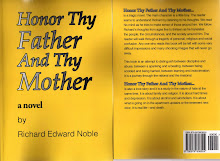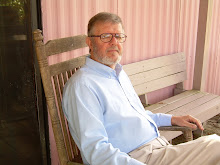
Red Scare 1918-1920
[This period in American History seems to me to be the most comparable to our present day situation. I’m waiting for the PBS special documentary film on this era.]
By Richard E. Noble
The Red Scare is a term used, traditionally, to describe a period of politically contrived mass paranoia beginning around the years 1917-18 and ending in approximately 1920-21. It relates to the notion of a conspiracy to overthrow the American government. The main group alleged to be at the root of this conspiracy were Communist.
In truth The Red Scare began in 1840 with Karl Marx’s Communist Manifesto and didn’t end until the recent crumbling of the Berlin Wall in East Germany; but 1917 through 1921 represents an exaggerated spike in the intensity of the overall government policy.
One would have to say that the seed of the panic was planted in Russia when in 1917 the Russian people “deserted” the Eastern Front during World War I and revolted against their traditionally oppressive Czarist government, precipitating a chaotic Civil War. The Bolshevist represented the workingman, the laborer, the struggling family man and international Unionism - Bolshevism was interpreted by the American Industrialists, and small and moderate business owners alike in the American historical tradition as an outright threat to their right to exist. And, of course, Communism being a radical and extremist point of view within the various political leanings of the social reformist did represent these fears. It was the stated goal of the Communists to end the Capitalist domination of the economic world. Their rhetoric was severe and threatening.
So if we take Communism as it was stated why would we then call the behavior of anti-Communists paranoid? In other words one would not be considered paranoid in trying to protect himself from people who were truly trying to destroy him. He would instead be “farsighted” and his behavior appropriate.
The action taken during this period in U.S. history is considered paranoid because the suppression of Communism was exaggerated into an excuse to stifle even legitimate and often patriotic necessary dissent and reasonable criticism of the government, the industrialist and the wealthy controlling elite.
A Quaker and a man who was considered a virtual pacifist during World War I - a man who had refused a national wartime position on his religious beliefs - by the name of A. Mitchell Palmer was appointed by then president Woodrow Wilson to be the Attorney General of the United States. Mr. Palmer turned out to be an extremist for the conservative point of view. He took patriotism to its far edge. He suppressed “inalienable” rights guaranteed under the U.S. Constitution. He orchestrated inappropriate mass arrests around the country. His actions precipitated vigilantism, violence, brutality, mass imprisonment, even torture and murder.
Mr. Palmer’s new authoritarianism is attributed to a bomb being exploded outside of his home. There were a series of bomb threats in eight different States at this time. They were directed at prominent wealthy citizens. Though they had no evidence other than this fact the attacks were attributed to Anarchists and Communists.
Critics of Mr. Palmer accused him of being behind the bomb plantings for the purpose of establishing himself in the upcoming presidential election. Others suggested that these bombs were just more of the old Industrialist’s tricks. The big shots had been caught in the past blowing up their own equipment, promoting violence, and planting bombs to turn the general public against the usual and ordinary suspects. But an ounce of suspicion was worth more than a pound of proof and the repressive crusade proceeded.
With the end of the war the expected economic depression was set in motion. The end of war production meant severe cutbacks. At home 9 million had been employed in businesses directly connected with the war and another 4 million soldiers had returned home looking for work. The abundance of unemployed led to wage cuts and then lay-offs. The wage cuts and lay-offs then led to massive labor strikes. There were strikes everywhere - steel, coal, textiles; even the Boston Police Department went on strike - and with very good cause. The unemployment and job competition led to race riots and even women were protesting in the streets. The girls were fighting against child labor, and the oppression of women. They wanted the right to vote - and many were demanding sobriety from their husbands - outrageous! Prohibition was made the law of the land. Suffragettes were marching in the streets.
The rebellious attitude of the women, children, blacks, unemployed workers, striking employed workers, policeman, union members, socialist, reformers, pacifists, hoboes and bums, outside agitators (immigrants) and whoever and whatever were all attributed to the rise of Communism. They were all Communist - Reds! And they were all involved in the organized attempt to bring down the United States Government.
The American Legion was started in 1919 as a patriotic organization to protect “loyal” native born Americans from these ungrateful immigrants and outside agitators. In a very short time the American Legion had over 600,000 members. A law was passed in 32 States outlawing the display of the Red Flag. The Red Flag had been adopted by the Communists but in actuality represented the blood of the Labor Union martyrs who were executed in 1886 in Chicago in response to the Haymarket Square riots.
There was a massive labor strike in Seattle followed by an even bigger steel strike. There were mass arrests around the nation - 4,000 in one event and 10,000 in another. Palmer had hired a man destined to become famous for vice, J. Edgar Hoover, to head a new bureau designed to uncover Bolshevik Conspiracies. In no time at all Hoover had over 200,000 cards of dangerous, destructive, potential anarchist in his file cabinets - names of prominent blacks, reformers and intellectuals. The I.W.W. which had been nearly destroyed during the war - with all its leadership incarcerated - continued to be attacked. The Alien and Espionage acts were passed. Eugene Debs the famous Socialist Party leader had been imprisoned for speaking out against the war. People were now being arrested for saying anything against the government or even “looking like a radical”. Victor Berger a socialist who had been elected to Congress was denied his seat. And finally the Buford shipped off with its boat load of Anarchist being deported to Russia. The shipment included the famous anarchists Emma Goldman and Alexander Berkman.
The fanatic crackdown didn’t slowdown until the business community began to realize a shortage in their cheap labor market. With the horrid thought of higher wages confronting them the Red Scare finally began to dissipate - but like the “old soldier” it never did die and it could hardly be said to have “faded” away.






































No comments:
Post a Comment